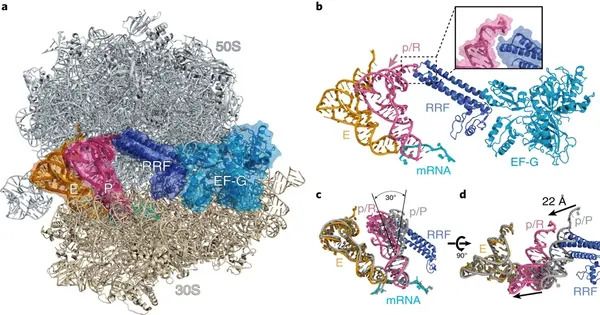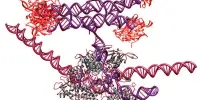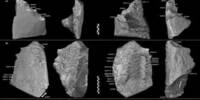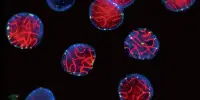Ribosomes are complex molecular machineries found in all cells that catalyze protein synthesis. They help to translate messenger RNA (mRNA) into proteins by combining transfer RNA (tRNA) molecules with amino acids and joining them together in a certain order determined by the mRNA sequence.
Researchers at LMU and Stanford University have discovered how cells renew protein factories at the endoplasmic reticulum. The production of proteins in the cell is an essential step of life. This method converts the genome’s genetic code into protein amino acid sequences. The process is complex, and it has been researched extensively for decades.
Protein biosynthesis is performed by special molecular machines, ribosomes, which consist of a large and small subunit. At the end of protein biosynthesis, these protein factories have to be broken up into their parts (recycled), so that they are ready for the next round of translation.
This results in a stable complex consisting of the changed 60S subunit and the E3 ligase. Simultaneously, it causes the big subunit to separate from SEC61. This is a critical step to guarantee that the big subunit is returned to the cytosol and ready for the next round.
Dr. Thomas Becker
Now a team led by Professor Roland Beckmann, Dr. Thomas Becker, and Ivan Penchev from LMU’s Gene Center Munich, working in collaboration with researchers at Stanford University led by Professor Ron Kopito, has shown how the recycling of ribosomes at the so-called endoplasmic reticulum (ER) functions. In the process, they discovered the role of an enzyme, a special E3 ligase that joins a small protein modification called UFM1 to the large ribosomal subunit, as a key mechanism of recycling. An account of their investigations has been published in the journal Nature.
One fascinating aspect of ribosomes is their involvement in protein recycling through a process known as ribosome recycling or ribosome dissociation. This process is crucial for cellular homeostasis and efficient protein synthesis. Ribosome recycling involves the disassembly of the ribosome complex after it has completed translating an mRNA molecule. This disassembly allows the ribosomal subunits to be reused for further rounds of translation.

Detailed insights into the recycling of ribosomes
Ribosomes are typically observed floating throughout the cytoplasm. “Here we know precisely how the recycling works,” explains Becker. They are sometimes found in the endoplasmic reticulum, which is a continuous membrane network that spans the entire cell.
Although many proteins begin in the cytosol, they must be transported to other organelles such as mitochondria, chloroplasts, and many others. If a protein is generated at the ER membrane, the entire translation machinery docks there. This is accomplished by the use of a protein-conducting channel (SEC61), which may transport proteins across the membrane or insert them into it during synthesis.
Following completion of the translation, there is an additional recycling step that is unique to the ER membrane. The big ribosome subunit must be separated again from the protein-conducting channel. Beckmann’s team has finally shown how this substep works: When the translation is complete, the E3 ligase detects the big subunit of the ribosome.
“It places — figuratively speaking — a small wedge, the protein UFM1, at the large subunit,” Becker said. “This results in a stable complex consisting of the changed 60S subunit and the E3 ligase. Simultaneously, it causes the big subunit to separate from SEC61. This is a critical step to guarantee that the big subunit is returned to the cytosol and ready for the next round.”
















